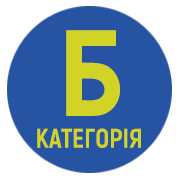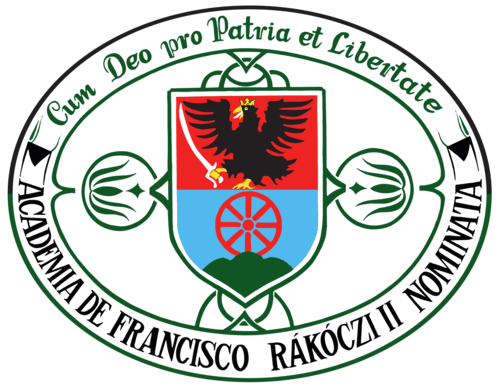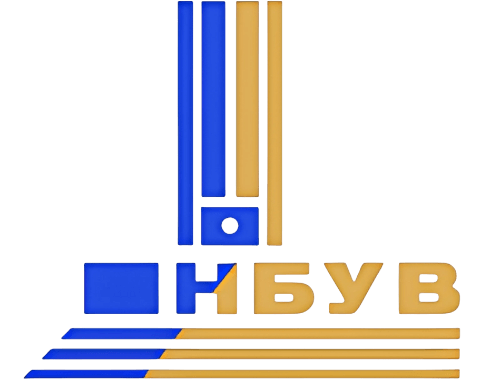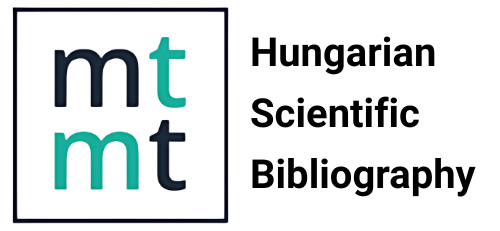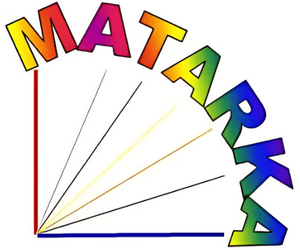Using artificial intelligence tools for translating computer terminology
DOI:
https://doi.org/10.58423/2786-6726/2025-2-23-44Keywords:
artificial intelligence, computer terminology translation, machine translation, statistical machine translation, neural machine translation, rule-based machine translation, CATAbstract
The emergence of artificial intelligence (AI) technologies has significantly transformed the field of translation, streamlining processes through automation and enhancing both efficiency and accuracy. As the demand for precise translation of technical texts grows, particularly in rapidly evolving fields such as computer science, AI tools have become indispensable for professional translators. This article investigates various AI-powered solutions used in translating specialised computer terminology, focusing on different approaches to machine translation, including rule-based, statistical, and neural systems.
The analysis examines the translation of selected English computer terms, lexico-syntactic units, and a fragment of a specialised computer vocabulary text into Ukrainian, comparing the performance of widely used systems such as Google Translate, DeepL, and ChatGPT. Our comparative study highlights the respective strengths and limitations of different machine translation tools, emphasising their ability (or inability) to preserve technical accuracy and context when handling complex or domain-specific vocabulary.
The article also describes several popular AI-based computer-assisted translation (CAT) platforms, including Trados, Smartcat, Star Transit, and Déjà Vu, and outlines their specialised features designed to support translators working with technical texts.
The investigation demonstrates that despite significant advances in AI translation tools, expert human revision remains essential for achieving accurate and context-sensitive translations of computer-related texts. The article concludes by discussing current challenges and identifying open questions for further research, such as improving AI’s understanding of specialised terminology, enhancing its ability to capture linguistic nuances, and optimising workflows that integrate human expertise with AI efficiency to meet the demands of computer translation in the digital age.
References
1. Biryukov, Artem 2008. Otsinka yakosti mashynnoho perekladu: avtoreferat dysertatsii na zdobuttia naukovoho stupenia kandydata filolohichnykh nauk [Evaluation of Machine Translation Quality: Abstract of the Dissertation for the Degree of Candidate of Philological Sciences]. Kyiv: Kyivskyi natsionalnyi universytet imeni Tarasa Shevchenka. (In Ukrainian)
2. Hryhoshkina, Yaroslava – Yanenko, Inna 2024. Innovatsii v kontseptualnomu khudozhnomu perekladi: vykorystannia movnykh instrumentiv ta kompiuternykh tekhnolohii [Innovations in conceptual literary translation: use of linguistic tools and computer technologies]. Zakarpatski filolohichni studii 34/1: s. 168–173. (In Ukrainian)
3. Derdi, Emma – Sakhro, A. 2011. Prychyny nyzkoi yakosti naukovo-tekhnichnoho perekladu ta shliakhy yikh podolannia [Causes of low-quality scientific and technical translation and ways to overcome them]. Naukovyi visnyk Volynskoho natsionalnoho universytetu imeni Lesi Ukrainky. Seriia «Filolohichni nauky. Movoznavstvo» 6/2: s. 34–39. (In Ukrainian)
4. Ivashkevych, Lesia 2019. Potentsial opanuvannia SAT-instrumentiv u systemi pidhotovky suchasnykh perekladachiv [Potential for mastering CAT tools in the system of training modern translators]. Molodyi vchenyi 66/2: s. 469–473. https://doi.org/10.32839/2304-5809/2019-2-66-101 (In Ukrainian)
5. Karaban, Viacheslav 2004. Pereklad anhliiskoi naukovoi i tekhnichnoi literatury. Hramatychni trudnoshchi, leksychni, terminolohichni ta zhanrovo-stylistychni problemy [Translation of English Scientific and Technical Literature: Grammatical Difficulties, Lexical, Terminological, and Genre-Stylistic Problems]. Vinnytsia: Nova Knyha. (In Ukrainian)
6. Kovalenko, Alla 2001. Naukovo-tekhnichnyi pereklad [Scientific and Technical Translation]. Ternopil: Vyd-vo Karpiuka. (In Ukrainian)
7. Mishchenko, Alla 2013. Mashynnyi pereklad u konteksti suchasnoho naukovo-tekhnichnoho perekladu [Machine translation in the context of modern scientific and technical translation]. Visnyk Kharkivskoho natsionalnoho universytetu imeni V. N. Karazina. Seriia: «Romano-hermanska filolohiia. Metodyka vykladannia inozemnykh mov» 73: s. 172–180. (In Ukrainian)
8. Moskaliuk, Olena 2020. Spetsyfika perekladu naukovo-tekhnichnykh tekstiv ta osoblyvosti yikh spryiniattia [Specifics of scientific and technical text translation and features of their perception]. Zakarpatski filolohichni studii 14/2: c. 103–107. (In Ukrainian)
9. Olkhovska, Alla 2018. Teoretychni i metodychni zasady rozvytku fakhovoi kompetentnosti mahistriv-perekladachiv zasobamy informatsiino komunikatsiinykh tekhnolohii: dysertatsiia na zdobuttia naukovoho stupenia doktora pedahohichnykh nauk [Theoretical and Methodological Principles of Developing Professional Competence of Master’s Students in Translation Through Information and Communication Technologies: Doctoral Dissertation in Pedagogical Sciences]. Khmelnytskyi: Khmelnytskyi natsionalnyi universytet. (In Ukrainian)
10. Pletenetska, Yuliia – Yakovenko, A. 2024. Khyby mashynnoho perekladu (na materiali suchasnoi anhlomovnoi internet-publitsystyky) [Mistakes in machine translation (based on modern English-language online journalism)]. Naukovyi visnyk Mizhnarodnoho humanitarnoho universytetu. Seriia: Filolohiia 67: c. 253–257. (In Ukrainian)
11. Riabova, Kateryna 2024. Teoretychni osnovy rozmezhuvannia poniat: mashynnyi ta avtomatyzovanyi pereklad [Theoretical foundations for distinguishing the concepts: machine translation and computer-assisted translation]. Vcheni zapysky TNU imeni V. I. Vernadskoho. Seriia: Filolohiia. Zhurnalistyka 35(74)/4: s. 69–74. (In Ukrainian)
12. Tyshchenko, Olena – Yukhymets, Svitlana – Fomina, Kateryna 2018. Osoblyvosti perekladu ukrainomovnoi naukovo-tekhnichnoi literatury haluzi kompiuternykh tekhnolohii na anhliisku movu: leksychnyi aspekt [Peculiarities of translating Ukrainian scientific and technical literature in the field of computer technologies into English: lexical aspect]. Naukovyi visnyk PNPU im. K. D. Ushynskoho 26: s. 121–132. (In Ukrainian)
13. Chernovaty, Leonid 2017. Pereklad anhlomovnykh naukovo-tekhnichnykh tekstiv: enerhiia, pryrodni resursy, transport [Translation of English-Language Scientific and Technical Texts: Energy, Natural Resources, Transport]. Vinnytsia: Nova Knyha. (In Ukrainian)
14. Chernovaty, Leonid – Karaban, Viacheslav – Omelianchuk, O. 2006. Pereklad anhlomovnoi tekhnichnoi literatury: navch. posib. [Translation of English-Language Technical Literature: Textbook] / edited by L. Chernovaty, V. Karaban. Vinnytsia: Nova Knyha. (In Ukrainian)
15. Shevchenko, Viktoriia 2006. Anhlo–ukrainskyi tlumachnyi slovnyk redaktsiino-vydavnychoi kompiuternoi terminolohii [English–Ukrainian Explanatory Dictionary of Editorial and Publishing Computer Terminology]. Kyiv: Lybid. (In Ukrainian)
16. Yukhymets, Svitlana 2018. Osoblyvosti perekladu naukovo-tekhnichnoho dyskursu (na materiali perekladiv z anhliiskoi movy ukrainskoiu) [Peculiarities of scientific and technical discourse translation (based on translations from English into Ukrainian)]. Naukovyi visnyk PNPU im. K. D. Ushynskoho 27: c. 223–232. (In Ukrainian)
17. Bowker, Lynne 2002. Computer-Aided Translation Technology: A Practical Introduction. Ottawa: University of Ottawa Press. https://doi.org/10.1353/book6554
18. Bowker, Lynne 2023. De-mystifying Translation. Introducing Translation to Non-translators. London: Routledge. https://doi.org/10.4324/9781003217718
19. Bowker, Lynne – Fisher, Des 2013. Computer-aided translation. In: Gambier, Yves – van Doorslaer, Luc eds. Handbook of Translation Studies. Amsterdam–Philadelphia: John Benjamins Publishing Company, pp. 60–65.
20. Byrne, Jody 2012. Scientific and Technical Translation Explained: A Nuts-and-Bolts Guide for Beginners. Oxon–New York: Routledge.
21. Christensen, Tina Paulsen – Schjoldager, Anne 2010. Translation-Memory (TM) Research: What do we know and how do we know it? HERMES – Journal of Language and Communication in Business 23/44: pp. 89–101. https://doi.org/10.7146/hjlcb.v23i44.97268
22. Fernández, Marcos – Pichel, Juan – Cabaleiro, José – Pena, Tomás 2016. Boosting performance of a statistical machine translation system using dynamic parallelism. Journal of Computing Science 13: pp. 37–48. https://doi.org/10.1016/j.jocs.2016.01.003
23. Foo, Jody 2012. Computational Terminology: Exploring Bilingual and Monolingual Term Extraction. Linköping: Linköping University, Department of Computer and Information Science.
24. Forcada, Mikel 2017. Making sense of neural machine translation. Translation Spaces 6/2: pp. 291–309. https://doi.org/10.1075/ts.6.2.06for
25. Hutchins, John 1988. Future perspectives in translation technologies. In: Vasconcellos, Muriel ed. Technology as Translation Strategy. Amsterdam–Philadelphia: John Benjamins Publishing Company, pp. 223–240. https://doi.org/10.1075/ata.ii.39hut
26. Khasawneh, Mohammad Ahmad Saleem – Al-Amrat, Mohammad Ghazi Raja 2023. Evaluating the role of artificial intelligence in advancing translation studies: insights from experts. Migration Letters 20: pp. 932–943.
27. Kostikova, Ilona – Shevchenko, Alona – Holubnycha, Liudmyla – Popova, Nataliya – Budianska, Viktoriia 2019. Use of machine translation technology for understanding scientific and technical texts. Journal of Theoretical and Applied Information Technology 97/4: pp. 1355–1366.
28. Krüger, Ralph 2022. Some translation studies informed suggestions for further balancing methodologies for machine translation quality evaluation. Translation Spaces 11/2: pp. 213–233. https://doi.org/10.1075/ts.21026.kru
29. Lawson, Veronica 1988. A translator’s map of machine translation. In: Vasconcellos, Muriel ed. Technology as Translation Strategy. Amsterdam–Philadelphia: John Benjamins Publishing Company, pp. 105–115. https://doi.org/10.1075/ata.ii.23law
30. Li, Panpan – Ning, Yuwen – Fang, Hongjuan 2023. Artificial intelligence translation under the influence of multimedia teaching to study English learning mode. International Journal of Electrical Engineering & Education 60/2: pp. 325–338. https://doi.org/10.1177/0020720920983528
31. Nikoulina, Vassilina – Sándor, Ágnes – Dymetman, Marc 2012. Hybrid adaptation of named entity recognition for statistical machine translation. In: Proceedings of the Second Workshop on Applying Machine Learning Techniques to Optimise the Division of Labour in Hybrid MT. Mumbai: The COLING 2012 Organising Committee, pp. 1–16.
32. Sakamoto, Akiko 2022. Translation and Technology. In: Malmkjær, Kirsten ed. The Cambridge Handbook of Translation. Cambridge: Cambridge University Press, pp. 55–74. https://doi.org/10.1017/9781108616119.004
33. URL1: Інструменти контролю якості перекладу. Technolex Translation Studio. https://technolex.com/uk/stattia/instrumenty-kontroliu-yakosti-perekla/ (Accessed: 25.06.2025).
34. URL2: Artificial Intelligence (AI). Data Science. https://datascience.eu/artificial-intelligence/artificial-intelligence-ai/ (Accessed: 25.06.2025).
35. URL3: Statistical machine translation. https://machinetranslate.org/statistical-machine-translation (Accessed: 25.06.2025).
36. URL4: Cambridge English Dictionary Online. Machine translation. https://dictionary.cambridge.org/dictionary/english/machine-translation (Accessed: 24.06.2025).
37. URL5: Collins English Dictionary Online. Machine translation. https://www.collinsdictionary.com/dictionary/english/machine-translation (Accessed: 24.06.2025).
38. URL6: Merriam-Webster Dictionary. Machine translation. https://www.merriam-webster.com/dictionary/machine translation (Accessed: 24.06.2025).
39. Wang, Lan 2023. The impacts and challenges of artificial intelligence translation tool on translation professionals. SHS Web of Conferences 163: pp. 1–6. https://doi.org/10.1051/shsconf/202316302021
Downloads
Published
Issue
Section
License
© 2025 Author(s). This is an open-access article distributed under the terms of the Creative Commons Attribution 4.0 International License (CC BY 4.0).
Authors retain copyright and grant the journal the right of first publication. The work is simultaneously licensed under a Creative Commons Attribution 4.0 International License (CC BY 4.0), which permits others to share the work with appropriate credit given to the author(s) and the initial publication in this journal.


